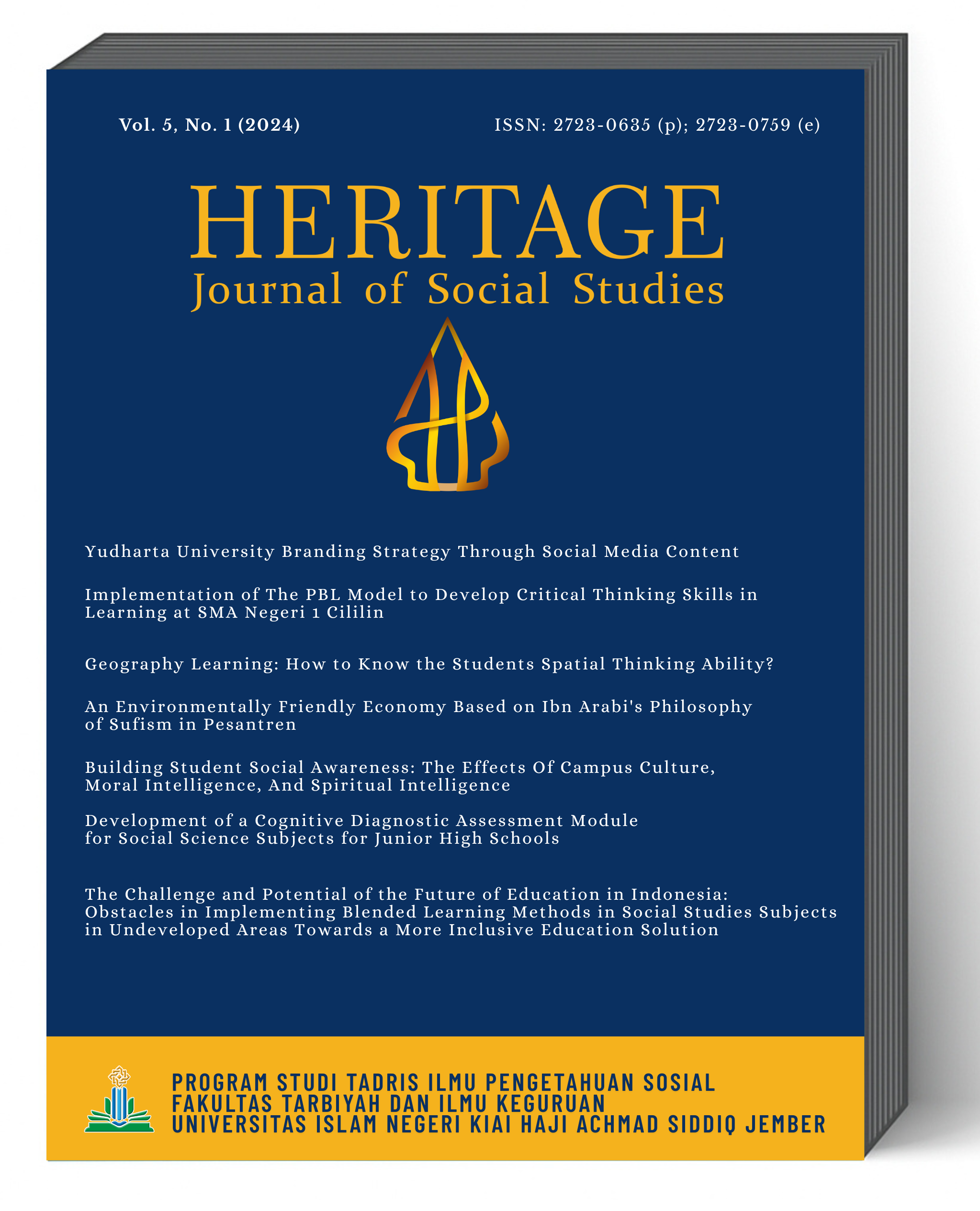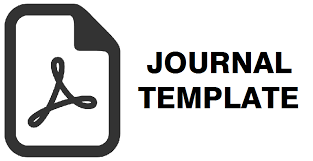Yudharta University Branding Strategy Through Social Media Content
DOI:
https://doi.org/10.35719/hrtg.v5i1.136Keywords:
Branding, Social Media, Student Attraction, Yudharta UniversityAbstract
University branding is key to increasing the attractiveness and image of an institution in the eyes of prospective students, especially in the digital era where social media plays an important role. This study analyzes the branding strategy of Yudharta University through social media content and evaluates students' perceptions of the content. Qualitative methods were used with data collection techniques through observation and in-depth interviews, involving the university's social media content manager and five sources from the 2021-2023 student intake. The results show that Yudharta University has implemented a branding strategy that involves various parties, including lecturers, the Student Executive Board (BEM), and influencers such as Inul Daratista, Maulana, and Gus Azmi. Content created and shared through platforms such as Yudharta TV and Ngalah TV with a creative approach that follows the latest trends, such as the use of Artificial Intelligence and 3D Pixar, is considered more effective by students, especially interactive and entertaining content. The Instagram account @ini.yudharta, managed by BEM 2023, shows higher engagement than the university's official account which is less interactive. The Islamic environment factor and the relationship with the Ngalah Islamic Boarding School also increase the university's attractiveness. This study emphasizes the importance of adapting social media content strategies that are in line with audience preferences to strengthen branding and attract more students. Yudharta University needs to continue to evaluate and adjust its approach to the development of social media trends so that branding strategies remain effective and relevant in facing competition in the higher education market.
References
Alberta, H., & Wijaya, L. S. (2021). Analisis Strategi Komunikasi Pemasaran Terpadu dalam Meningkatkan Penjualan dan Brand Awareness. Jurnal Ilmiah Media, Public Relations, Dan Komunikasi (IMPRESI), 2(1).
Almaida, F. A., & Nugrahani, R. U. (2019). Analisis Pengelolaan Konten Digital Marketing Media Sosial Institut Français Indonesia Bandung. Jurnal Ilmu Komunikasi Acta Diurna, 15(1), 96–109. https://jos.unsoed.ac.id/index.php/acta_diurna/article/view/1578
Bamberger, A., Bronshtein, Y., & Yemini, M. (2020). Marketing universities and targeting international students: A comparative analysis of social media data trails. Teaching in Higher Education, 25(4), 476–492. https://doi.org/10.1080/13562517.2020.1712353
Brown, J., Broderick, A., & Lee, N. (2007). Word of Mouth Communication Within Online Communities: Conceptualizing the Online Social Network. Journal of Interactive Marketing, 21, 2–20. https://doi.org/10.1002/dir.20082
Dwivedi, Y. K., Ismagilova, E., Hughes, D. L., Carlson, J., Filieri, R., Jacobson, J., Jain, V., Karjaluoto, H., Kefi, H., & Krishen, A. S. (2021). Setting the future of digital and social media marketing research: Perspectives and research propositions. International Journal of Information Management, 59, 102168. https://www.sciencedirect.com/science/article/pii/S0268401220308082
Efendi, M. N., & Prasetiyo, L. (2022). Komunikasi Pemasaran Terpadu dalam Peningkatan Potensi Pasar Rakyat di Kota Madiun. Muslim Heritage, 7(1), Article 1. https://doi.org/10.21154/muslimheritage.v7i1.3926
Fadli, M. R. (2021). Memahami desain metode penelitian kualitatif. Humanika, Kajian Ilmiah Mata Kuliah Umum, 21(1), 33–54. https://scholar.archive.org/work/a3mjph7zgrchfhdz5bah2o66de/access/wayback/https://journal.uny.ac.id/index.php/humanika/article/download/38075/pdf_1
Farinloye, T., Wayne, T., Mogaji, E., & Watat, J. K. (2020). Social media for universities’ strategic communication. In Strategic marketing of higher education in Africa (pp. 96–115). Routledge. https://www.taylorfrancis.com/chapters/edit/10.4324/9780429320934-8/social-media-universities-strategic-communication-temitope-farinloye-thomas-wayne-emmanuel-mogaji-josu%C3%A9-kuika-watat
Fish, W. (2021). Philosophy of perception: A contemporary introduction. Routledge. https://www.taylorfrancis.com/books/mono/10.4324/9781351049504/philosophy-perception-william-fish
Habes, M., Salloum, S. A., Alghizzawi, M., & Mhamdi, C. (2020). The Relation Between Social Media and Students’ Academic Performance in Jordan: YouTube Perspective. In A. E. Hassanien, K. Shaalan, & M. F. Tolba (Eds.), Proceedings of the International Conference on Advanced Intelligent Systems and Informatics 2019 (Vol. 1058, pp. 382–392). Springer International Publishing. https://doi.org/10.1007/978-3-030-31129-2_35
Heding, T., Knudtzen, C. F., & Bjerre, M. (2020). Brand management: Mastering research, theory and practice. Routledge. https://www.taylorfrancis.com/books/mono/10.4324/9780367172596/brand-management-tilde-heding-charlotte-knudtzen-mogens-bjerre
Juhaidi, A. (2024). Social media marketing of Islamic higher education institution in Indonesia: A marketing mix perspective. Cogent Business & Management, 11(1), 2374864. https://doi.org/10.1080/23311975.2024.2374864
Kaplan, A., & Haenlein, M. (2010). Users of the World, Unite! The Challenges and Opportunities of Social Media. Business Horizons, 53, 59–68. https://doi.org/10.1016/j.bushor.2009.09.003
Kotler, P., & Keller, K. L. (2016). Marketing Management (15th ed.). Harlow, Essex Pearson Education Limited.
Li, C., & Bernoff, J. (2011). Groundswell: Winning in a World Transformed by Social Technologies. Harvard Business Review Press.
Li, F., Larimo, J., & Leonidou, L. C. (2021). Social media marketing strategy: Definition, conceptualization, taxonomy, validation, and future agenda. Journal of the Academy of Marketing Science, 49(1), 51–70. https://doi.org/10.1007/s11747-020-00733-3
Lim, W. M., Jee, T. W., & De Run, E. C. (2020). Strategic brand management for higher education institutions with graduate degree programs: Empirical insights from the higher education marketing mix. Journal of Strategic Marketing, 28(3), 225–245. https://doi.org/10.1080/0965254X.2018.1496131
Mangold, W., & Faulds, D. (2009). Social media: The new hybrid element of the promotion mix. Business Horizons, 52, 357–365. https://doi.org/10.1016/j.bushor.2009.03.002
Mulyadi, A. I., & Zuhri, S. (2020). Analisis Strategi Brand Image Kedai Kopi “MOENG KOPI” Melalui Media Sosial Instagram. Jurnal Ilmu Komunikasi, 10(2), 109–124. https://jurnalfdk.uinsa.ac.id/index.php/JIK/article/view/355
Panda, S., Pandey, S. C., Bennett, A., & Tian, X. (2019). University brand image as competitive advantage: A two-country study. International Journal of Educational Management, 33(2), 234–251. https://www.emerald.com/insight/content/doi/10.1108/IJEM-12-2017-0374/full/html
Pringle, J., & Fritz, S. (2019). The university brand and social media: Using data analytics to assess brand authenticity. Journal of Marketing for Higher Education, 29(1), 19–44. https://doi.org/10.1080/08841241.2018.1486345
Rachmawati, Y. (n.d.). 3 Universitas Terbaik Di Wilayah Pasuruan, Masuk Peringkat 99 Besar Versi UniRank Se-JawaTimur lho—Batu Network. 3 Universitas Terbaik Di Wilayah Pasuruan, Masuk Peringkat 99 Besar Versi UniRank Se-JawaTimur lho - Batu Network. Retrieved July 17, 2024, from https://batu.jatimnetwork.com/pendidikan/9988924365/3-universitas-terbaik-di-wilayah-pasuruan-masuk-peringkat-99-besar-versi-unirank-se-jawatimur-lho
Safko, L. (2012). The Social Media Bible: Tactics, Tools, and Strategies for Business Success.
Safko, L., & Brake, D. K. (2009). The Social Media Bible: Tactics, Tools, and Strategies for Business Success. Wiley.
Schunk, D. H., & DiBenedetto, M. K. (2020). Motivation and social cognitive theory. Contemporary Educational Psychology, 60, 101832. https://www.sciencedirect.com/science/article/pii/S0361476X19304370
Shawky, S., Kubacki, K., Dietrich, T., & Weaven, S. (2019). Using social media to create engagement: A social marketing review. Journal of Social Marketing, 9(2), 204–224. https://www.emerald.com/insight/content/doi/10.1108/JSOCM-05-2018-0046/full/html
Tajvidi, R., & Karami, A. (2021). The effect of social media on firm performance. Computers in Human Behavior, 115, 105174. https://www.sciencedirect.com/science/article/pii/S0747563217305514
Voorveld, H. A. M. (2019). Brand Communication in Social Media: A Research Agenda. Journal of Advertising, 48(1), 14–26. https://doi.org/10.1080/00913367.2019.1588808
Wardhana, A. (n.d.). No Title. PERILAKU KONSUMEN DI ERA DIGITAL PENERBIT CV.EUREKA MEDIA AKSARA.
Yusanda, A., Darmastuti, R., & Huwae, G. N. (2021). STRATEGI PERSONAL BRANDING MELALUI MEDIA SOSIAL INSTAGRAM (Analisis Isi pada Media Sosial MahasiswaUniversitas Kristen Satya Wacana). Scriptura, 11(1), 41–52. https://doi.org/10.9744/scriptura.11.1.41-52
Downloads
Published
How to Cite
Issue
Section
License
Copyright (c) 2025 heritage

This work is licensed under a Creative Commons Attribution-ShareAlike 4.0 International License.





